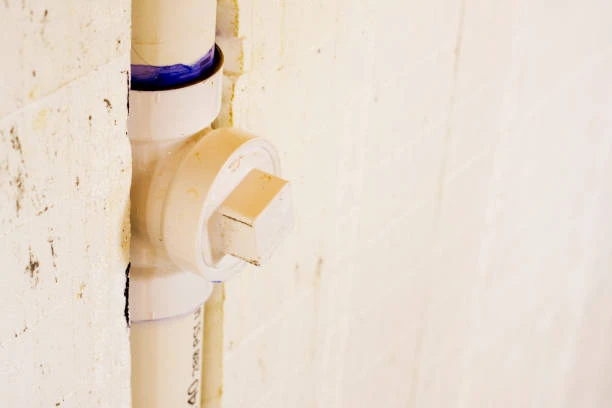Introduction
Plastic plumbing fittings are a popular choice in modern plumbing due to their affordability and durability. However, growing concerns about microplastics have raised questions about the potential health risks associated with these fittings. Could they be a hidden source of microplastics in drinking water? This article explores how plastic plumbing fitting contribute to microplastics and their potential effects on human health.
What Are Plastic Plumbing Fitting?
Plastic plumbing fittings are components made from materials like PVC, CPVC, or PEX. They connect pipes in plumbing systems for water supply and drainage.
Why Are They Popular?
- Cost-Effective: More affordable than metal alternatives.
- Corrosion-Free: Resistant to rust and chemical reactions.
- Lightweight: Easy to transport and install.
Understanding Microplastics
What Are Microplastics?
Microplastics are tiny plastic particles, usually less than 5 millimeters in size. They can result from the degradation of larger plastic materials.
How Do Microplastics Enter Water Systems?
- Degradation of Pipes and Fittings: Over time, plastic plumbing materials may shed tiny particles.
- External Pollution: Microplastics from industrial or environmental sources may infiltrate water systems.
Plastic Plumbing Fitting as a Microplastics Source
Plastic plumbing fittings, like other plastic products, can degrade under specific conditions.
Factors Contributing to Microplastics Formation
- Aging and Wear: Prolonged use may cause microscopic particles to detach.
- Exposure to UV Rays: Outdoor pipes exposed to sunlight can degrade faster.
- Water Flow and Friction: High water pressure increases wear and tear.
Potential Health Impacts of Microplastics
Scientists are actively researching the effects of microplastics on human health. While studies are ongoing, there are concerns about their long-term impacts.
1. Digestive System Issues
Microplastics ingested through water may accumulate in the digestive system, potentially causing inflammation.
2. Chemical Contamination
Microplastics often carry toxic substances like BPA or phthalates, which may disrupt hormones.
3. Cellular Damage
Emerging research suggests microplastics may damage cells and lead to oxidative stress.
Current Research on Microplastics and Plumbing
Studies show that the likelihood of microplastics from plumbing fittings entering water systems depends on quality and environmental conditions.
Key Findings
- High-quality fittings release fewer particles.
- Poor maintenance increases the risk of degradation.
- Water temperature and pressure significantly affect wear and tear.
Benefits of Plastic Plumbing Fitting Despite Concerns
Plastic plumbing fittings offer several undeniable advantages, even amidst the microplastics debate.
1. Cost Savings
Plastic fittings are more affordable and easier to replace compared to metal alternatives.
2. Resistance to Corrosion
They resist rust and scaling, ensuring cleaner water over time.
3. Sustainability Initiatives
The industry is working on developing materials that minimize microplastics shedding.
How to Minimize Microplastics from Plastic Plumbing Fitting
1. Choose High-Quality Products
Purchase fittings from reputable manufacturers that comply with safety standards.
2. Regular Maintenance
Inspect and replace worn or aging fittings to reduce degradation.
3. Use Filters
Install water filters designed to capture microplastics before water reaches taps.
4. Avoid High Temperatures
Use materials like CPVC for hot water systems to reduce degradation risks.
Plastic Plumbing Fitting vs. Alternatives
While plastic fittings raise concerns, alternatives also have drawbacks.
1. Metal Fittings
- Pros: Durable and resistant to high temperatures.
- Cons: Prone to corrosion and expensive.
2. PEX Fittings
- Pros: Flexible and resistant to bursting.
- Cons: Still a form of plastic with potential microplastics risks.
The Role of Regulations in Addressing Microplastics
Governments and organizations are developing stricter standards to minimize microplastics from plastic products.
1. Manufacturing Standards
New guidelines focus on improving material quality to reduce degradation.
2. Water Safety Regulations
Authorities monitor water supplies for microplastics to ensure public safety.
3. Recycling Initiatives
Promoting recycling reduces the environmental impact of plastic fittings.
Innovations in the Plumbing Industry
The plumbing industry is investing in innovative materials and technologies to address concerns about microplastics.
1. Bio-Based Plastics
Fittings made from biodegradable materials reduce environmental risks.
2. Advanced Coatings
Special coatings on plastic fittings minimize particle shedding.
3. Improved Recycling Programs
Recycling initiatives focus on reusing materials without compromising quality.
Are Plastic Plumbing Fittings Still a Good Choice?
Despite microplastics concerns, plastic plumbing fittings remain a practical choice for many. By using high-quality materials and adhering to maintenance practices, users can mitigate risks effectively.

Conclusion
Plastic plumbing fittings provide numerous benefits, including affordability, ease of installation, and resistance to corrosion. While concerns about microplastics are valid, proactive measures like choosing high-quality products and regular maintenance can minimize risks. With ongoing research and innovation, the industry aims to address these issues, ensuring a safer future for all.
FAQs
1. Do plastic plumbing fittings release microplastics?
Yes, but the risk is minimal with high-quality products and proper maintenance.
2. Can microplastics from plumbing harm health?
Potential risks exist, but more research is needed to confirm their impact.
3. How can I reduce microplastics in my water?
Install water filters and replace aging plumbing components regularly.
4. Are metal fittings better than plastic?
Metal fittings resist microplastics issues but are costlier and prone to corrosion.
5. What innovations address microplastics concerns?
Bio-based plastics and advanced coatings are reducing particle shedding from fittings.